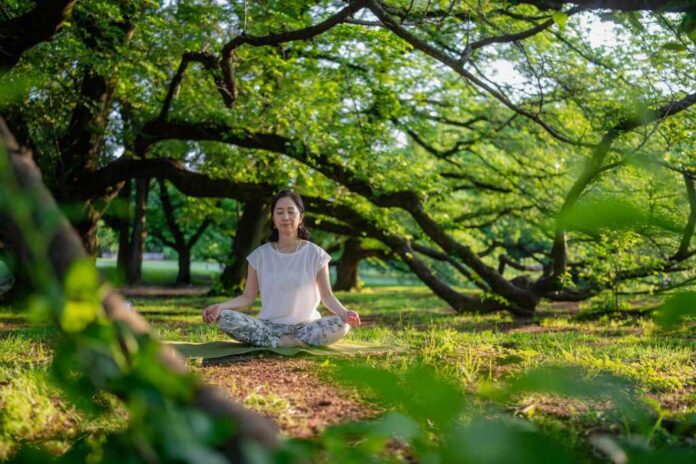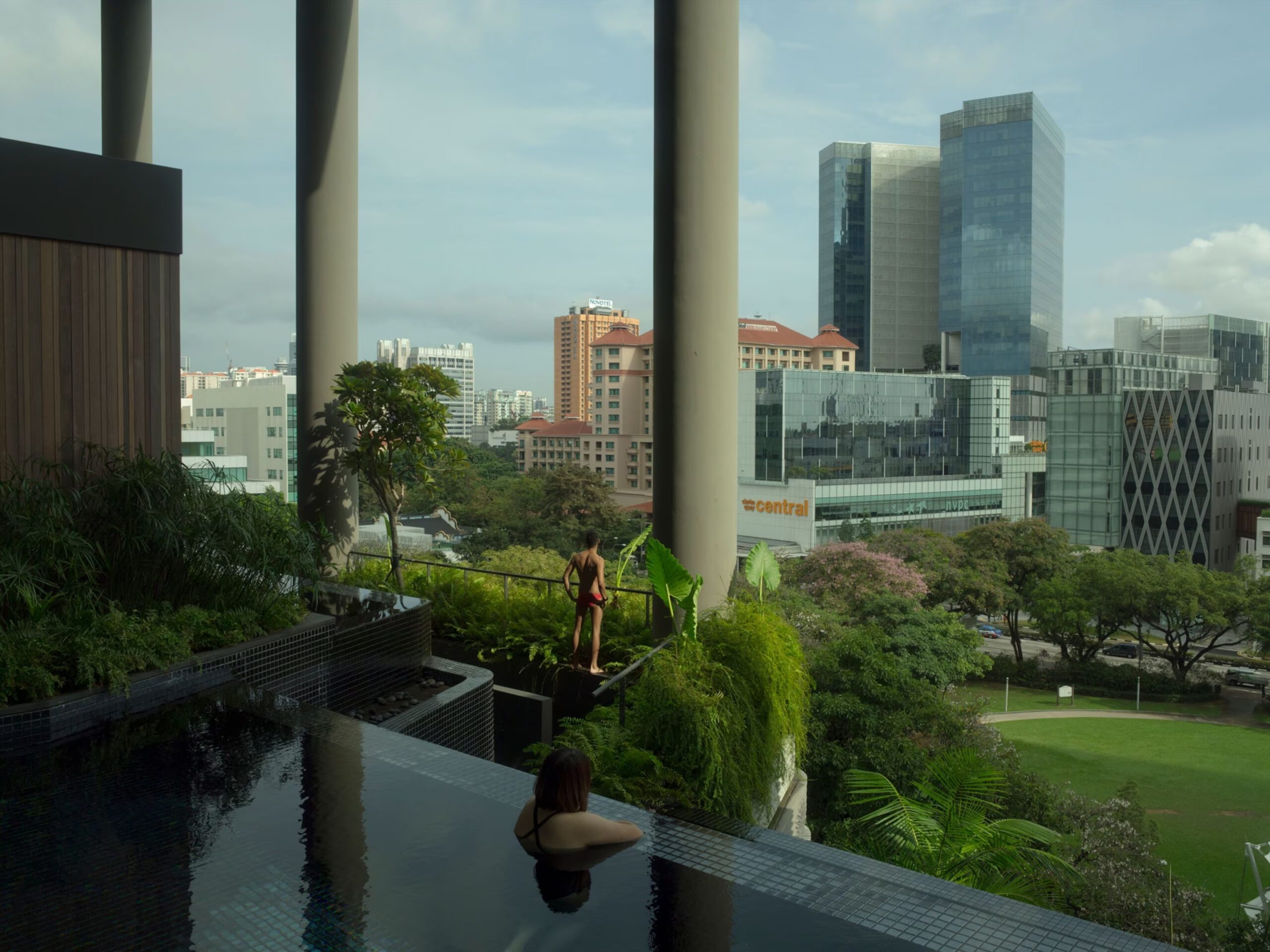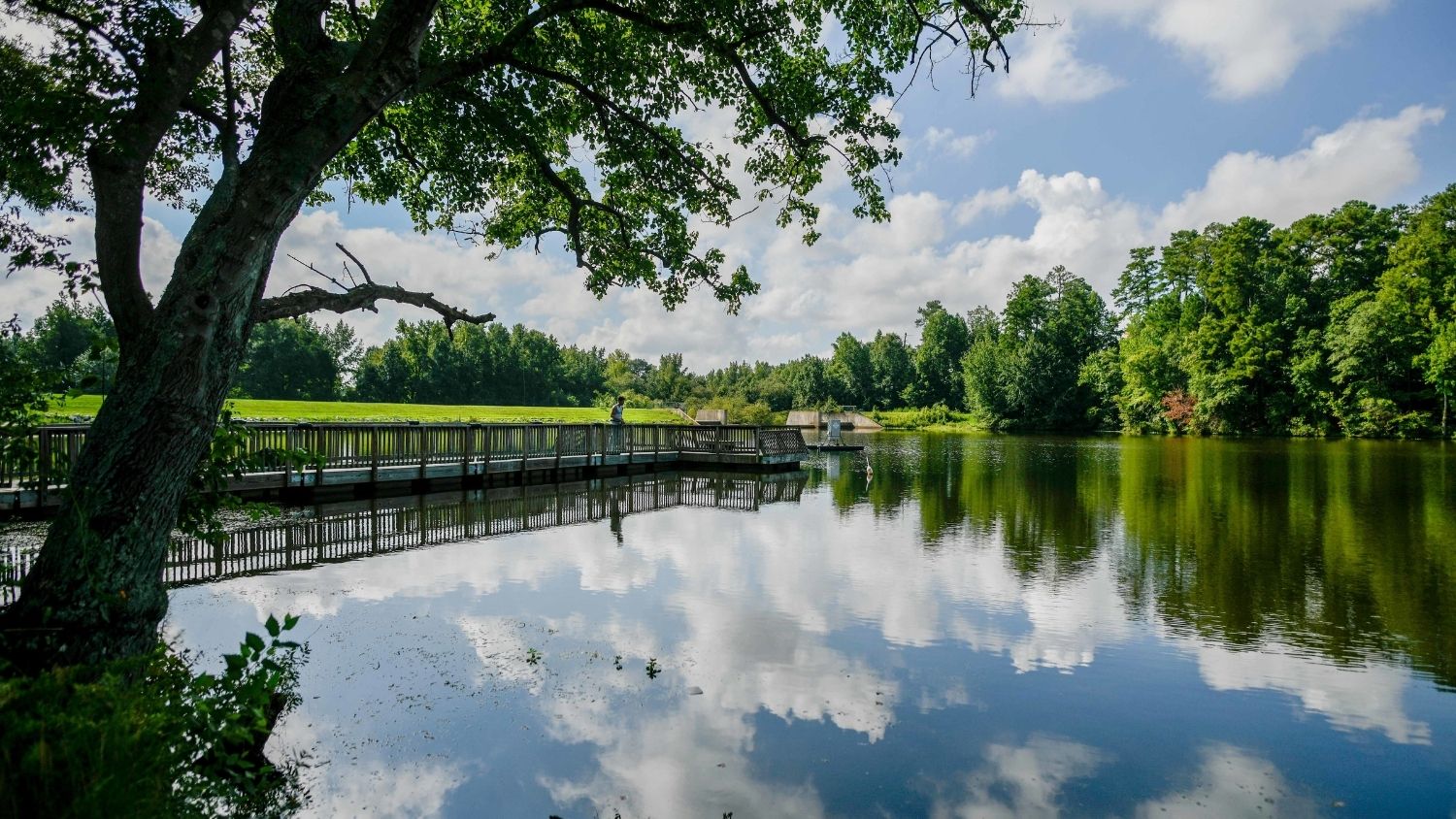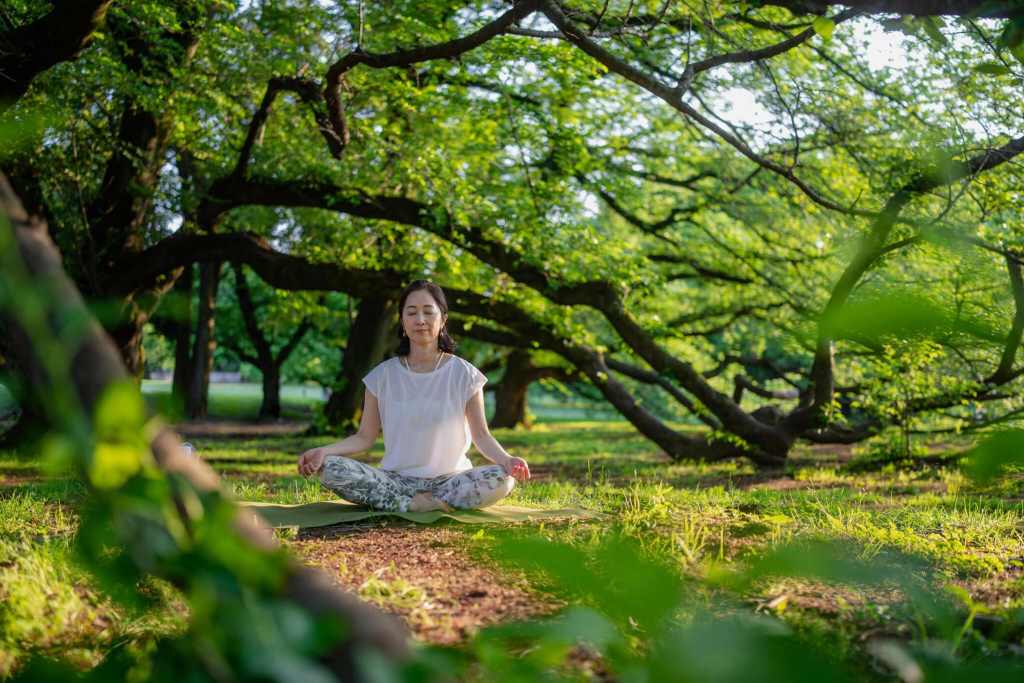Introduction
In recent years, a growing body of research has unveiled a compelling connection between the presence of green and blue spaces in the environment, And the enhancement of older adult health. As societies globally grapple with the challenges posed by an aging population, understanding and harnessing the potential benefits of Greenery and Water nature becomes increasingly crucial. Green spaces, such as parks and gardens, and blue spaces, like lakes and coastal areas, have emerged as vital contributors to the physical and mental well-being of older people.
Numerous studies have delved into the profound impact of natural environments on the health of older adults. They are revealing a multifaceted relationship between exposure to Greenery and Water nature and various aspects of well-being. From mitigating the effects of stress and fostering cognitive resilience to promoting physical activity and immune system function. The advantages associated with green and blue spaces are both diverse and substantive. This introductory exploration will traverse the scientific landscape underpinning this phenomenon. Shedding light on the mechanisms through which nature exerts its positive influence on older adult health. As we embark on this journey, the goal is not only to unravel the intricate interplay between nature and aging. But also to empower individuals, communities, and policymakers to leverage this knowledge for the betterment of the golden years.
The Science Behind It
The aging process brings with it a myriad of health considerations, and as societies adapt to the challenges posed by an increasingly older demographic, researchers have turned their attention to the potential benefits of green and blue spaces for older adults. This article explores the scientific underpinnings behind the claim that exposure to nature. In the form of Greenery and Water elements, can significantly enhance the health of older people.
I. Stress Reduction and Psychological Well-being: Numerous studies have shown that spending time in green and blue spaces has a profound impact on stress reduction and psychological well-being among older adults. The restorative effects of Greenery and Water nature, often attributed to increased tranquility and a break from urban stimuli, contribute to lower stress hormone levels, improved mood, and a decreased risk of mental health disorders.
II. Cognitive Benefits: Research suggests that exposure to natural environments can play a pivotal role in maintaining cognitive function and preventing cognitive decline in older adults. Green and blue spaces have been associated with improved attention, memory, and problem-solving skills. The mechanisms behind this cognitive boost include enhanced cerebral blood flow, reduced mental fatigue, and a positive impact on overall brain structure.
III. Physical Health and Immune Support: The physical health benefits of green and blue spaces extend to increased physical activity levels among older adults. Access to nature encourages walking, outdoor exercises, and social activities, thereby promoting cardiovascular health, musculoskeletal strength, and overall physical well-being. Additionally, exposure to nature has been linked to improvements in the immune system, with fresh air and the natural release of phytoncides contributing to enhanced immune function.
- Social Engagement: The presence of green and blue spaces fosters social interaction among older adults. Community gardens, parks, and waterfront areas provide conducive settings for social engagement, reducing social isolation and promoting a sense of belonging. Social connections have been consistently associated with better mental and emotional health outcomes in older populations.
- Environmental Restoration and Stress Recovery: The intricate connection between older adult health and green and blue spaces is further emphasized by the concept of environmental restoration. Natural settings act as a refuge for individuals seeking respite from the demands of daily life. Facilitating stress recovery and contributing to an overall sense of well-being.
Mental Health Benefits
The mental health benefits of green and blue spaces for older adults are profound, offering a therapeutic refuge that positively influences psychological well-being in various ways.
- Stress Reduction: Exposure to natural environments has been consistently linked to reduced stress levels among older adults. The tranquility and visual appeal of green spaces contribute to a sense of calmness, helping alleviate the pressures associated with daily life. Reduced stress, in turn, fosters a more resilient mental state.
- Mood Enhancement: Nature’s soothing effects extend to mood enhancement. Spending time in green and blue spaces has been associated with an uplifted mood and a decreased risk of depression and anxiety among older individuals. The presence of natural elements triggers the release of neurotransmitters like serotonin, commonly known as the “feel-good” hormone.
- Cognitive Restoration: Green and blue spaces play a vital role in cognitive restoration for older adults. Greenery and Water has been linked to improved concentration, attention, and cognitive function. The mental fatigue accumulated through routine activities can be mitigated by the restorative qualities of natural environments, promoting clearer thinking and better decision-making.
-
Emotional Well-being: Beyond stress reduction, these spaces contribute to a broader sense of emotional well-being. Older adults who engage with nature often report feeling more content, satisfied, and emotionally stable. The emotional connection to natural surroundings provides a sense of purpose and joy, enriching the overall quality of life.
- Mindfulness and Relaxation: Green and blue spaces offer opportunities for mindfulness and relaxation. Whether it’s a stroll through a park or the contemplation of a water feature, these environments provide a conducive setting for meditation and reflection. Such mindful activities contribute to stress relief and promote a positive mindset.
- Social Interaction: The social aspect of green and blue spaces also plays a crucial role in mental health. Shared activities in these environments, such as group walks or community events, foster social connections and combat feelings of loneliness. Strong social ties are integral to maintaining good mental health in older age.
- Coping with Aging: Access to nature facilitates healthier coping mechanisms for the challenges associated with aging. Older adults who engage with Greenery and Water elements often report a more positive outlook on life, increased resilience, and a greater ability to cope with the transitions and limitations that come with aging.
In summary, the mental health benefits derived from green and blue spaces are multi-faceted. From stress reduction and mood enhancement to cognitive restoration and social interaction, the therapeutic qualities of nature emerge as a powerful and accessible tool for promoting mental well-being in the aging population. Incorporating these spaces into the daily lives of older adults can contribute significantly to a more fulfilling and resilient mental health landscape.
Physical Health Benefits
The physical health benefits of green and blue spaces for older adults are substantial, offering a range of positive outcomes that contribute to overall well-being and longevity.
- Increased Physical Activity: Green and blue spaces provide conducive environments for physical activities such as walking, jogging, and outdoor exercises. Access to parks and nature trails encourages older adults to engage in regular physical activity, promoting cardiovascular health, improving mobility, and supporting weight management.
- Enhanced Cardiovascular Health: Regular exercise in natural settings has been linked to improved cardiovascular health among older individuals. Activities like walking or cycling in green spaces contribute to better circulation, lower blood pressure, and a reduced risk of cardiovascular diseases, supporting heart health in the aging population.
- Musculoskeletal Strength: Engaging with Greenery and Water nature often involves activities that require movement and muscle engagement. Gardening, for example, promotes the use of various muscle groups, contributing to improved musculoskeletal strength. Stronger muscles and joints are essential for maintaining mobility and preventing age-related frailty.
-
Improved Respiratory Function: Spending time in green and blue spaces typically involves exposure to fresh air, which can have positive effects on respiratory health. Clean, oxygen-rich air in natural environments supports better lung function and may benefit individuals with respiratory conditions associated with aging.
- Immune System Support: Nature exposure has been linked to improvements in immune system function. The phytoncides released by plants, coupled with the benefits of outdoor activities, contribute to a strengthened immune response. A robust immune system is crucial for older adults in defending against infections and illnesses.
- Pain Reduction: Natural environments have been associated with pain reduction and relief for older adults dealing with chronic conditions such as arthritis. The calming effects of nature, combined with the distraction provided by the surroundings, can contribute to a decreased perception of pain and improved overall comfort.
- Better Sleep Quality: Regular exposure to green and blue spaces has been correlated with improved sleep quality among older adults. The combination of physical activity, exposure to natural light, and the calming effects of Greenery and Water nature can positively impact sleep patterns, promoting restful and rejuvenating sleep.
- Weight Management: Engaging in outdoor activities in natural settings supports weight management efforts. The variety of activities available in green and blue spaces can contribute to calorie expenditure, helping older adults maintain a healthy weight and reduce the risk of obesity-related health issues.
In conclusion, the physical health benefits derived from green and blue spaces are diverse and encompass various aspects of well-being. From promoting regular physical activity and cardiovascular health to strengthening muscles and supporting immune function, these spaces offer a holistic approach to maintaining and enhancing the physical health of older adults. Integrating nature into daily routines becomes a powerful strategy for supporting healthy aging and fostering a resilient and active lifestyle.
Social Engagement
Green and blue spaces play a pivotal role in fostering social engagement among older adults, providing settings that promote interaction, community connection, and a sense of belonging.
- Community Gathering Spaces: Parks, community gardens, and waterfront areas serve as natural gathering spaces, encouraging older adults to come together for various activities. These communal settings provide opportunities for socializing, forming friendships, and sharing common interests, contributing to a vibrant and connected community.
- Group Activities and Events: Green spaces often host a variety of group activities and events that cater to older adults. These may include walking groups, outdoor exercise classes, or cultural events. Participating in such activities not only promotes physical health but also facilitates social interaction, reducing feelings of isolation and loneliness.
- Shared Outdoor Hobbies: Green and blue spaces offer a canvas for shared hobbies among older adults. Gardening clubs, bird-watching groups, or fishing communities provide avenues for individuals with similar interests to come together, fostering a sense of camaraderie and shared experiences.
- Intergenerational Interaction: Nature settings attract people of all ages, creating opportunities for intergenerational interaction. Older adults can engage with younger generations through activities like mentoring, storytelling, or participating in community events, fostering a sense of connection and mutual understanding.
- Reduced Social Isolation: Access to green and blue spaces has been associated with reduced social isolation among older adults. The presence of inviting outdoor environments encourages individuals to venture outside, meet neighbors, and engage in conversations, thus mitigating the risk of social withdrawal and its negative impacts on mental health.
- Community Gardening Projects: Community gardens, in particular, promote collaborative efforts among older adults. Working together on gardening projects not only enhances the aesthetic appeal of the neighborhood but also cultivates a sense of shared responsibility, teamwork, and social interaction.
-
Outdoor Recreation Clubs: Clubs centered around outdoor recreation, such as walking or hiking groups, provide avenues for older adults to connect with like-minded individuals. These clubs not only promote physical activity but also offer a social support system, creating a sense of community and shared adventure.
- Events for Special Occasions: Green spaces often host events for special occasions, such as festivals or seasonal celebrations. These events draw community members together, providing opportunities for socializing and creating a festive atmosphere that contributes to a sense of community identity.
- Volunteer Opportunities: Many green and blue spaces offer volunteer programs, allowing older adults to actively contribute to the maintenance and improvement of these environments. Engaging in volunteer work fosters a sense of purpose, accomplishment, and social connection.
- Walking Paths and Benches: Thoughtfully designed walking paths and comfortable benches within green spaces encourage older adults to take strolls or sit and chat with fellow park-goers. These simple amenities facilitate spontaneous social encounters and contribute to the creation of a welcoming and sociable environment.
In summary, green and blue spaces act as catalysts for social engagement among older adults, providing settings where individuals can connect, share experiences, and build a sense of community. The diverse range of activities and opportunities within these environments promotes not only physical health but also the social well-being of older populations.
Overcoming Challenges
While the benefits of green and blue spaces for older adult health are significant, certain challenges may impede widespread access and utilization. Overcoming these challenges is crucial to ensuring that older people can fully enjoy the advantages these environments offer.
-
Accessibility Issues:
- Physical Accessibility: Many green spaces may lack infrastructure to accommodate mobility aids or have uneven terrain, making it difficult for older people with mobility challenges to access them.
- Transportation: Limited access to transportation may hinder older adults from reaching green and blue spaces, particularly if they are located at a distance from residential areas.
-
Safety Concerns:
- Security: Safety concerns, such as fear of crime or accidents, may deter older adults from utilizing outdoor spaces. Implementing safety measures, like well-lit paths and visible security presence, can alleviate these concerns.
-
Lack of Senior-Friendly Amenities:
- Seating and Rest Areas: Insufficient seating or rest areas may limit the time older adults can spend in these spaces comfortably. Ensuring the presence of benches and shaded areas is essential.
- Restroom Facilities: The absence of restroom facilities can be a significant deterrent. Providing accessible and well-maintained facilities is essential for the comfort of older individuals.
-
Awareness and Education:
- Lack of Information: Some older people may be unaware of the benefits or existence of nearby green and blue spaces. Educational initiatives and outreach programs can inform older adults about the advantages and accessibility of these environments.
-
Community Engagement:
- Limited Community Programs: Lack of organized community programs within green spaces may limit the engagement of older adults. Encouraging community-driven initiatives, events, and activities can enhance participation.
-
Weather-Related Challenges:
- Extreme Weather Conditions: Harsh weather conditions, such as extreme heat or cold, may deter older adults from outdoor activities. Creating sheltered areas and promoting activities suitable for varying weather can address this challenge.
-
Financial Constraints:
- Entrance Fees: Some green spaces may charge entrance fees, which can be a barrier for older people on fixed incomes. Implementing senior discounts or free access programs can mitigate financial constraints.
-
Customized Programming:
- Limited Tailored Programs: Generic programs may not cater to the specific needs and preferences of older adults. Developing customized programs, such as gentle fitness classes or nature walks tailored for older people, can enhance engagement.
-
Interdisciplinary Collaboration:
- Limited Collaboration: Lack of collaboration between urban planners, healthcare professionals, and community organizations may hinder the creation of age-friendly outdoor spaces. Promoting interdisciplinary partnerships can lead to more inclusive designs.
-
Advocacy for Inclusivity:
- Community Advocacy: Encouraging community advocacy and involvement in shaping green and blue spaces ensures. The unique needs of older adults are considered in the planning and development stages.
Addressing these challenges requires a collaborative effort from policymakers, urban planners, healthcare professionals, and community members. By actively working towards creating inclusive, accessible, and senior-friendly green and blue spaces. We can ensure that the numerous health benefits they offer are accessible to all older adults, promoting a healthier and more vibrant aging population.
Practical Tips for Older People
Empowering older people to incorporate green and blue spaces into their daily lives involves practical strategies tailored to their unique needs and preferences. Here are some practical tips to help older adults maximize the benefits of nature:
-
Start with Short Walks:
Begin with short, leisurely walks in nearby parks or gardens. Gradually increase the duration as comfort and stamina improve. Walking is a low-impact exercise that provides numerous health benefits.
-
Choose Senior-Friendly Activities:
Opt for activities suitable for varying fitness levels, such as tai chi, gentle yoga, or seated exercises. Many parks offer specialized programs or have open spaces for these activities.
-
Bring a Friend or Pet:
Invite a friend or bring a pet along for companionship. Social interaction enhances the experience and may motivate older people to engage in outdoor activities more regularly.
-
Utilize Senior Discounts:
Take advantage of any senior discounts or free admission offered by local parks, botanical gardens, or nature reserves. This can make outdoor activities more accessible and budget-friendly.
-
Pack Snacks and Stay Hydrated:
Bring along healthy snacks and a water bottle to stay nourished and hydrated during outdoor excursions. Proper nutrition and hydration contribute to overall well-being.
-
Explore Accessible Trails:
Look for parks with paved or well-maintained trails to accommodate mobility aids like walkers or wheelchairs. Accessible trails ensure that all older people can enjoy the benefits of nature.
-
Participate in Gardening:
Engage in gardening activities, either in community gardens or at home. Planting flowers, herbs, or vegetables provides physical activity and a sense of accomplishment.
-
Attend Outdoor Events:
Participate in outdoor events, concerts, or festivals held in green spaces. These events offer opportunities for socializing and enjoying cultural experiences in a natural setting.
-
Practice Mindfulness:
Embrace mindfulness in nature by incorporating meditation or deep breathing exercises. Find a quiet spot in a park or near water to relax and connect with the natural surroundings.
-
Capture Memories:
Bring a camera or smartphone to capture the beauty of green and blue spaces. Creating a visual diary of outdoor experiences can serve as a reminder of enjoyable moments.
-
Use Mobility Aids Strategically:
If using mobility aids, plan routes that are wheelchair or walker-friendly. Some parks provide equipment like all-terrain wheelchairs for added accessibility.
-
Check Weather Conditions:
Stay informed about weather conditions to plan outdoor activities accordingly. Dress appropriately for the weather to ensure comfort and safety.
-
Join Outdoor Classes:
Explore outdoor classes specifically designed for older people, such as Greenery and Water nature walks, bird watching, or photography classes. These activities combine learning with the joy of being outdoors.
-
Create a Routine:
Establish a routine for outdoor activities, whether it’s a daily morning stroll or a weekly visit to a nearby Greenery and Water nature spot. Consistency fosters habit formation and maximizes health benefits.
-
Seek Community Support:
Join local senior groups or Greenery and Water nature clubs to connect with like-minded individuals. Community support encourages and facilitates a shared experience of nature.
By incorporating these practical tips, older adults can seamlessly integrate green and blue spaces into their lives, fostering a holistic approach to health and well-being. Whether through physical activities, social engagement, or mindful appreciation, older people can enjoy the myriad benefits that Greenery and Water nature offers for a fulfilling and active lifestyle.
Case Studies
Case Study 1: “Community Gardens and Social Well-being”
Background: In a suburban community, a group of older adults came together to establish a community garden. The aim was not only to cultivate fresh produce but also to create a social space for older people to connect, share gardening experiences, and enjoy the benefits of Greenery and Water nature.
Findings:
- Social Engagement: The community garden became a hub for social interaction. older people worked collaboratively on gardening projects, shared tips, and formed strong bonds.
- Mental Health Benefits: Participants reported improved mood and reduced feelings of loneliness. The shared sense of purpose and accomplishment contributed to enhanced mental well-being.
- Physical Activity: Gardening activities provided a low-impact form of exercise. The participants, many of whom had limited mobility, found joy in tending to the garden beds and maintaining the shared space.
- Cognitive Stimulation: Planning and organizing the garden plots stimulated cognitive functions. older people engaged in discussions about plant care, crop rotation, and seasonal planning, fostering cognitive vitality.
Conclusion: The community garden not only produced fresh, locally grown produce but also became a thriving social hub, promoting physical and mental well-being among the participating older adults. The success of this case study highlights the potential of community-driven green initiatives to address multiple aspects of senior health.
Case Study 2: “Waterfront Walks and Physical Fitness”
Background: In a coastal town, a local initiative introduced waterfront walking trails specifically designed for older adults. The aim was to provide a scenic and accessible outdoor space for older people to engage in physical activity and enjoy the health benefits of coastal environments.
Findings:
- Increased Physical Activity: The waterfront trails attracted older adults seeking a pleasant environment for exercise. Walking, jogging, and gentle exercises along the waterfront promoted regular physical activity.
- Cardiovascular Health: Participants experienced improvements in cardiovascular health. The combination of sea air, scenic views, and physical exertion contributed to better circulation and heart health.
- Joint and Muscle Health: Walking on softer surfaces near the water’s edge provided a low-impact exercise, benefiting joint health. Many older people reported improved flexibility and reduced joint pain.
- Social Interaction: The waterfront trails became popular meeting spots. older people formed walking groups, fostering social connections and providing mutual encouragement for maintaining an active lifestyle.
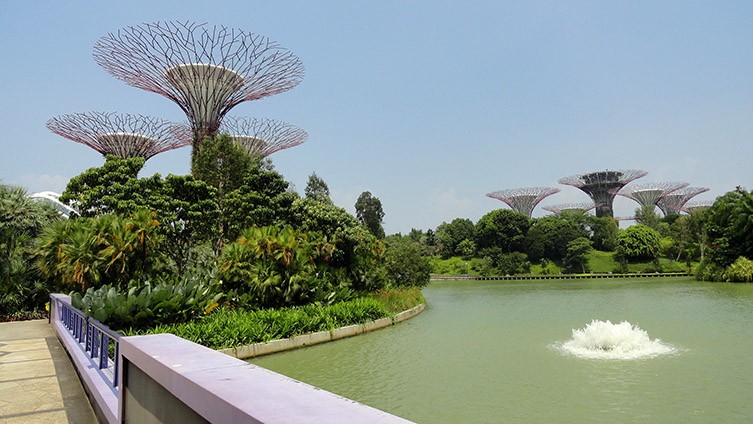 Conclusion
Conclusion
The exploration of the relationship between older adult health and green. And blue spaces reveal a tapestry of benefits woven through physical, mental, and social dimensions. The scientific underpinnings demonstrate that exposure to nature is not merely an aesthetic luxury. But a crucial element in promoting a holistic and thriving aging experience.
Physical Health: The evidence is clear—green and blue spaces contribute significantly to the physical well-being of older adults, from cardiovascular health and increased physical activity to joint flexibility and immune system support. Nature serves as a natural prescription for maintaining and enhancing the physical vitality of older people.
Mental Health: Nature’s therapeutic qualities extend to mental well-being. Reduction in stress, cognitive restoration, and emotional stability are just a few facets of the positive impact that green and blue spaces exert on the mental health of older individuals. Greenery and Water Nature becomes a sanctuary for tranquility, rejuvenation, and a bolstering of cognitive resilience.
Social Engagement: The communal aspect of green and blue spaces emerges as a vital contributor to social connection among older adults. Whether through community gardens, waterfront walks, or outdoor events. These environments facilitate the formation of friendships, shared experiences, and a sense of belonging, countering social isolation and loneliness.
Addressing challenges such as accessibility issues and safety concerns is paramount in ensuring that the benefits of green. And blue spaces are inclusive and accessible to all older people. By implementing practical tips and learning from case studies, communities can actively promote an age-friendly environment. That encourages older adults to embrace the outdoors as an integral part of their daily lives.
In essence,
the integration of green and blue spaces into the lives of older adults is not a mere luxury. But a necessity for fostering a healthier, more vibrant, and fulfilling aging journey. As we continue to advocate for age-friendly urban planning, community initiatives, and awareness campaigns. We pave the way for a future where Greenery and Water nature are recognized as an essential partner in the well-being of our aging population. In this symbiotic relationship between older people and the great outdoors. The golden years take on a richer, more vibrant hue—one that reflects the profound connection between older adult health. And the embracing embrace of green and blue spaces.
https://www.ncbi.nlm.nih.gov/pmc/articles/PMC4556255/

